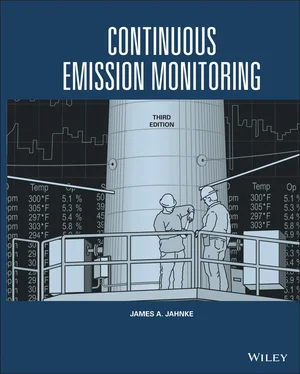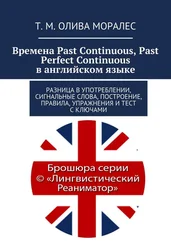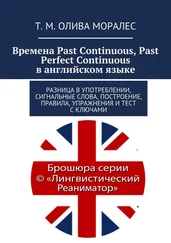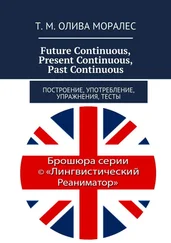James A. Jahnke - Continuous Emission Monitoring
Здесь есть возможность читать онлайн «James A. Jahnke - Continuous Emission Monitoring» — ознакомительный отрывок электронной книги совершенно бесплатно, а после прочтения отрывка купить полную версию. В некоторых случаях можно слушать аудио, скачать через торрент в формате fb2 и присутствует краткое содержание. Жанр: unrecognised, на английском языке. Описание произведения, (предисловие) а так же отзывы посетителей доступны на портале библиотеки ЛибКат.
- Название:Continuous Emission Monitoring
- Автор:
- Жанр:
- Год:неизвестен
- ISBN:нет данных
- Рейтинг книги:4 / 5. Голосов: 1
-
Избранное:Добавить в избранное
- Отзывы:
-
Ваша оценка:
- 80
- 1
- 2
- 3
- 4
- 5
Continuous Emission Monitoring: краткое содержание, описание и аннотация
Предлагаем к чтению аннотацию, описание, краткое содержание или предисловие (зависит от того, что написал сам автор книги «Continuous Emission Monitoring»). Если вы не нашли необходимую информацию о книге — напишите в комментариях, мы постараемся отыскать её.
The new edition of the only single-volume reference on both the regulatory and technical aspects of U.S. and international continuous emission monitoring (CEM) systems Continuous Emission Monitoring
Continuous Emission Monitoring:
Continuous Emission Monitoring, Third Edition
Continuous Emission Monitoring — читать онлайн ознакомительный отрывок
Ниже представлен текст книги, разбитый по страницам. Система сохранения места последней прочитанной страницы, позволяет с удобством читать онлайн бесплатно книгу «Continuous Emission Monitoring», без необходимости каждый раз заново искать на чём Вы остановились. Поставьте закладку, и сможете в любой момент перейти на страницу, на которой закончили чтение.
Интервал:
Закладка:
Due to the expanded use of CEM systems in regulatory programs both in the United States, Canada, Europe, and Asia, it is important for data comparability between nations that both the monitoring technology and regulatory standards used for system specification be technically sound. Additional emphasis is given to international approaches to continuous monitoring, particularly approval methods for the “automatic monitoring systems” (AMS) of the European Union (EU). Differences between the U.S. and European methods are discussed with regard to data equivalence and the implications for international agreements.
CEM technology can be considered to be mature for the continuous measurement of gases such as SO 2, NO, CO, O 2, and CO 2, in addition to the measurement of particulate matter, mercury, and flue gas volumetric flow. By mature, it is meant that sufficient knowledge has been attained over the past 50 years of CEM development so that when properly designed, operated, and maintained, these CEM systems can be used to measure emissions to within acceptable levels of precision and accuracy. Advances in the application of digital electronics have greatly improved monitoring instruments, as well as continuing the trend to smaller, more cost‐effective, and less maintenance intensive instruments. But CEM systems do remain application dependent. An instrument manufacturer's new analyzer or a CEM systems integrator's innovative design must still be evaluated with respect to plant‐specific requirements as well as the ever more demanding regulatory requirements. In terms of present realities, the first law of CEM systems that “there is no best type of system” may be rephrased more positively. The best system is one that (i) works in the plant application, (ii) can be purchased and operated at “reasonable cost,” and (iii) requires relatively low maintenance. It is, however, not always easy to obtain that one bestsystem when confronted with marketing claims, conflicting performance histories, cost limitations, and installation deadlines.
This third edition is written in the same spirit as the first and second, presenting the principles by which CEM system technical and regulatory developments can be understood. This book is designed to be comprehensive in scope, to meet the needs of both the plant environmental engineer applying CEM systems and control agency personnel incorporating CEM systems in regulatory programs.
Although the chemical or physical basis of analyzer operation is given, the theoretical and technical details necessary for designing monitoring instrumentation and systems is beyond the scope of this book. Ample references are incorporated after each chapter should the reader wish to further pursue specific topics. This edition of Continuous Emission Monitoring , as the first and second editions, seeks to introduce the reader to this dynamic field and to point the way to the knowledge of today's CEM systems necessary to address the challenges of today's regulatory environment.
The author would like to thank the graphic artists who have contributed to the evolution of the figure illustrations presented in this book. These artists include Katherine Lindsay and Betsy Huber who initiated many of the original CEM system dimensional drawings, Sherry Stafford who prepared the graphics for the first edition, and John Havel who developed the new graphics for both the second edition and this third edition. The author is indebted to the instrument manufacturers and CEM system integrators who graciously furnished diagrams and technical information of their instruments and systems. Thanks are also expressed to Kata Kollath for assistance in editing, and the colleagues who offered suggestions for the development of this edition and pointed out errors in the second edition.
James A. Jahnke, PhD
CHAPTER 1 INTRODUCTION TO CEM SYSTEMS
In the early 1970s, a better way was needed to monitor stack emissions than by manual stack tests. In general, manual methods are conducted by inserting a probe into a stack, extracting a sample, and analyzing the sample in a laboratory, which is a time‐consuming process. Manual source tests also require a degree of preparation, and the coordination and prior scheduling of a test may result in source operations being highly tuned before such testing takes place. Manual test results, therefore, may not necessarily be representative of day‐to‐day emissions. Clearly, for monitoring plant emissions and the performance of pollution control equipment on a more realistic basis, alternative measurement techniques are needed.
A BRIEF HISTORY
Attempts were made in the 1960s to use ambient air analyzers and process industry analyzers to measure source emissions. Ambient air analyzers were not successful at that time due to the instability of dilution systems. However, process analyzers did prove to be useful, particularly those that employed ultraviolet and infrared photometric techniques. Then, in the late 1960s and early 1970s, successful developments emerged in instrumentation in Germany and the United States. Ambient analyzers were redesigned to measure gases at higher concentration levels, and the so‐called “in‐situ” analyzers were developed, which can measure gases in the stack without sample extraction. These methods, in addition to new German optical systems for opacity monitors and the development of luminescence measurement techniques in the United States, provided a technological base from which continuous emission monitoring (CEM) regulations could be established.
Continuous emission monitoring requirements in the United States were first promulgated in 1971. However, the CEM industry did not begin to develop until after 6 October 1975 when the U.S. Environmental Protection Agency (U.S. EPA) established performance specifications for CEM systems and required their installation in a limited number of sources. Since then, CEM systems have been applied to a wider range of sources, and over 50 years of experience has led to the evolution of analyzers and monitoring systems with ever‐improving performance The technology is considered mature, having a solid foundation in reliable instrumentation, procedures, and standards that can assure the quality of source emission data at specified limits of accuracy and precision.
The earliest focus of CEM technology was on the analyzer – the instrument that measures. However, it was soon found that the process of transporting the gas to the analyzer was a source of many problems. Such problems were addressed in a number of ways by CEM “systems” integrators. Those who understood the effects of corrosive stack gases on materials and the effects of pressure and temperature on gas transport were the first to design and successfully market systems that worked under severe sampling conditions.
The difficulties associated with extractive systems led to the idea of measuring the flue gases as they exist in the stack or duct, without conditioning. This idea was realized in the development of “in‐situ” analyzers, second‐generation source monitoring systems especially designed to avoid problems inherent in extracting gases. In‐situ systems have been designed to measure gas concentrations, flue gas opacity, flue gas flow, and particulate matter concentrations. Many present‐day CEM systems are a combination of extractive and in‐situ systems ( Figure 1‐1).
Third‐generation systems emerged with the promulgation of the Clean Air Act Amendments of 1990 and the implementation of the acid rain allowance trading program. Requirements to report emissions in tons per year led to the demand for systems that could measure pollutant mass rate. As a result of this program, flow monitors and dilution‐extractive systems were added to the inventory of monitoring methods. It was in the acid rain program that CEM systems found their maturity. To assure the success of plant monitoring programs, both equipment and personnel resources were made available by corporate management. And here, it was found that for the success of monitoring programs, trained and experienced personnel can be equally important as the equipment.
Читать дальшеИнтервал:
Закладка:
Похожие книги на «Continuous Emission Monitoring»
Представляем Вашему вниманию похожие книги на «Continuous Emission Monitoring» списком для выбора. Мы отобрали схожую по названию и смыслу литературу в надежде предоставить читателям больше вариантов отыскать новые, интересные, ещё непрочитанные произведения.
Обсуждение, отзывы о книге «Continuous Emission Monitoring» и просто собственные мнения читателей. Оставьте ваши комментарии, напишите, что Вы думаете о произведении, его смысле или главных героях. Укажите что конкретно понравилось, а что нет, и почему Вы так считаете.












